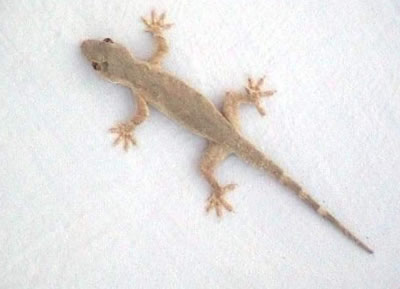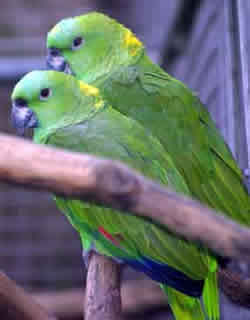Fauna
Acapulco and environs is home to some of the world's most treasured wildlife. Many of the species are rare or endangered. This article covers some of the more unusual fauna that you may be able to see while visiting or living on Southern Mexico's Pacific coast. See related articles specifically on sea turtles, dolphins, sharks and insects.
Cuijas

The Cuija, or Gecko, is not the most charismatic of creatures. You will find him sneaking round the light fittings, running along the ceiling, sometimes falling off. He can be found in the best hotels and restaurants. He is not a pest; he is a blessing. He eats the things you like even less: flies, mosquitoes and even bigger beasties. He will not harm you. So let him get on with his life. You never know: the mosquito he has just devoured might have been about to give you a dose of Dengue fever.
Parrots & Parrot Smuggling

Numerous species of rare birds make their way through these parts. Most are smuggled from Central and South America. Two species in particular are indigenous to Acapulco or nearby areas: -- the Yellow-headed Amazon Parrot (or as we lay people like to call them amazona ochrocephala oratix)and the Yellow-napped Amazon Parrot (amazona auropalliata). Both can be found from Southern Mexico down to Costa Rica.
An expert could point you to several types of parrot that can sometimes be spotted in the nearby wilderness: the maroon fronted parrot, the thick billed parrot, the lilac crowned parrot and even Rhynchopsitta pachyrhyncha pachyrhyncha (yes there really is one with this name). They are hard to identify from a distance, and avoid human contact, so the intrepid will just have to go out into the brush, sit down, and wait for a good while.
Parrots are known locally as loros. The really large ones (the variety you see at the zoo or sitting on a pirate's sholder) are really McCaws, called guacamayas in Maxico. They are not indigenous to Guererro but are (ahem) "imported" from South America. At several thousand dollars each, they fetch a mighty good price even this far south.
You do not need to be an expert to understand about parrot smuggling. It is the second most lucrative illegal cross border activity. It is estimated that at least 25,000 birds are smuggled into Texas each year. Probably 5 times that number die before they even get to the border. Many are plucked from their nests at an age before they can live on their own. The trade to Europe is also very lucrative. According to TRAFFIC, a World Wildlife Fund trade monitoring unit, the annual retail turnover in all kinds of parrots, both imported and captive bred, in the United States is estimated at $300,000,000. Captive bred birds do not make a very large percentage of this astonishing figure. Parrots have become one of the most threatened species in the world … not entirely due to poaching but also because of habitat destruction.
The profit margins for parrot smuggling are not unlike those of the cocaine trade. A parrot that costs $20 in Mexico can fetch between $300 and $10,000 on the open market in the US or Europe. And better than the cocaine trade, the penalties for being caught are not so stiff. To make matters worse, the US Fish and Wildlife Service is desperately under funded, what with wars in Asia and terrorists to be tried, Mexican parrot smugglers are at a fairly low rung in the hierarchy. Viewed in comparison to other pressing matters, how can you expect politicians to care about birds? This is a symptom of a general malaise, one that eventually could bring down the whole human race. Policy makers and their well-heeled constituents simply care more about making money than the state of the planet. Earth will live on -- a poorer place, to be sure, but there are plenty of ants and cockroaches to take our place.
The irony of all of this is that parrots are miserable pets. They are noisy, dirty and incredibly destructive. We are all better off if they are left in the jungle to rip up leaves and spit bits of fruit all over the place, rather than to be caged in an urban apartment to eat the Turkish rug and shred the silk curtains.
